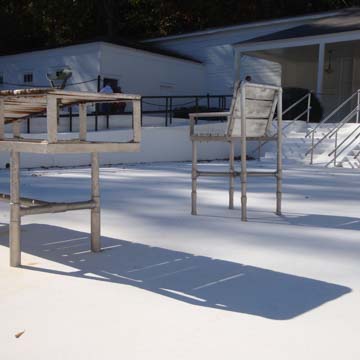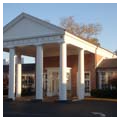In 1921, Franklin Delano Roosevelt was diagnosed with polio after becoming paralyzed from his waist down. He initially thought his political career had ended. His friend, George Foster Peabody, a New York businessman and philanthropist, told Roosevelt about a young polio victim’s recovery after bathing in the 88-degree springs at Warm Springs, Georgia. Roosevelt traveled to the Warm Springs resort complex in October 1924. The complex included the 1893 Meriwether Inn, a rambling 300-room Victorian house described as ramshackled by the 1920s, but the attraction for Roosevelt was the potentially healing powers of the natural springs and resort pools. After swimming in the waters, for the first time in three years, Roosevelt was able to move his right leg. In 1926 he bought the 1,200-acre resort property and the following year organized the nonprofit Warm Springs Foundation, turning his new Georgia property over to the foundation.
The foundation was the first, and for many years the only, hospital in the world devoted solely to the treatment of poliomyelitis. Roosevelt’s improvement encouraged him to return to politics. Narrowly elected governor of New York in 1928, Roosevelt went on to win the presidency in 1932; he would be elected to three additional terms. Throughout this period, with the exception of 1942, Roosevelt returned to Warm Springs every year, staying several weeks at a time—making eighteen visits in all. Local conditions, notably the much higher costs of electricity in rural Georgia compared to his home at Hyde Park, are said to have influenced the creation of some of Roosevelt’s New Deal programs, in particular the Rural Electrification Administration. Roosevelt also built houses in Warm Springs as well as structures for the rehabilitation institute. Architect Henry Toombs, who was associated with Warm Springs from the 1920s until his death in 1967, worked with Roosevelt in planning almost all the buildings of the hospital area and much of the residential architecture (mostly single-story, hipped-roof cottages) in the district, including Roosevelt’s Little White House.
In 1933, Toombs built Georgia Hall, which replaced the Meriwether Inn. Containing offices for the foundation and a large dining room, Georgia Hall became the center of a series of connected structures that were subsequently added to the complex to provide for the various functions of the rehabilitation center. The site plan of orderly layout, the consistency of classical forms, and intact interior decorative trim are noteworthy. Corridors and entry doors are wide, to accommodate wheelchairs, and windows often extend to the floor to allow emergency egress by wheelchair. With its associated temple-front buildings joined by classical colonnades, the Georgia Hall complex is reminiscent of Thomas Jefferson’s University of Virginia campus layout.
Behind the main hall, the other portions of the Georgia Hall complex were added as funds became available, but followed a coordinated plan and classical aesthetic. Kress Hall and Builders’ Hall, which originally served as dormitories, were built in 1935 adjacent to Georgia Hall’s west wing. The Columbus Colonnade, across the rear of Georgia Hall, dates to 1937 and was later extended. Across the court to the rear of Georgia Hall is the Medical Building (Surgical Wing), opened in 1939. The East Wing (1945–1946), Roosevelt Hall (1952–1953), and the Children's Pavilion (1955, Joseph Asimano) are later additions, with Founder’s Hall completing the courtyard in 1957. Outside the Georgia Hall complex, Toombs designed a cruciform chapel (1937), a brace shop (1938), and a school (1939), the latter remaining accredited as an elementary and high school until its closure in 1968.
The still-active Roosevelt Warm Springs Institute for Rehabilitation now encompasses 940 acres, with new facilities added since Roosevelt’s day. Since the invention of the polio vaccine, the mission of the Roosevelt Warm Springs Institute for Rehabilitation has been to provide medical and vocational rehabilitation to patients with spinal cord injuries, post-polio symptoms, strokes, and other medical conditions. Finding benefit at Warm Springs himself, Roosevelt provided a legacy that continues today to serve patients with disabilities.
References
Charlton, James H., “Warm Springs Historic District,” Meriwether County, Georgia. National Register of Historic Places Inventory–Nomination Form, 1980. National Park Service: U.S. Department of the Interior, Washington, D.C.








